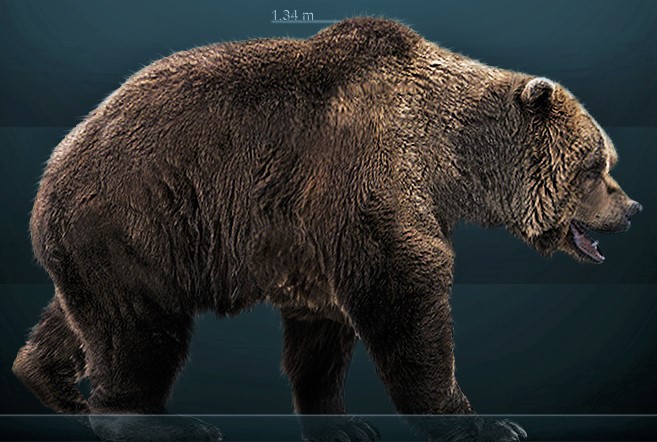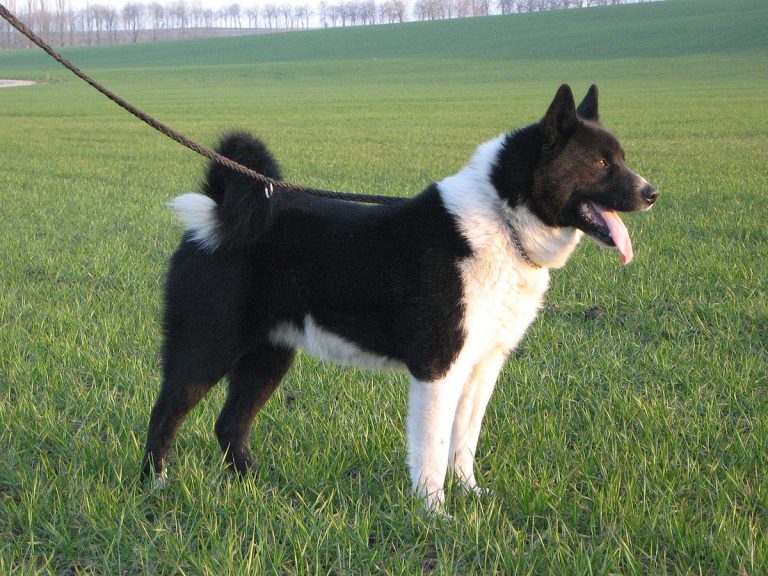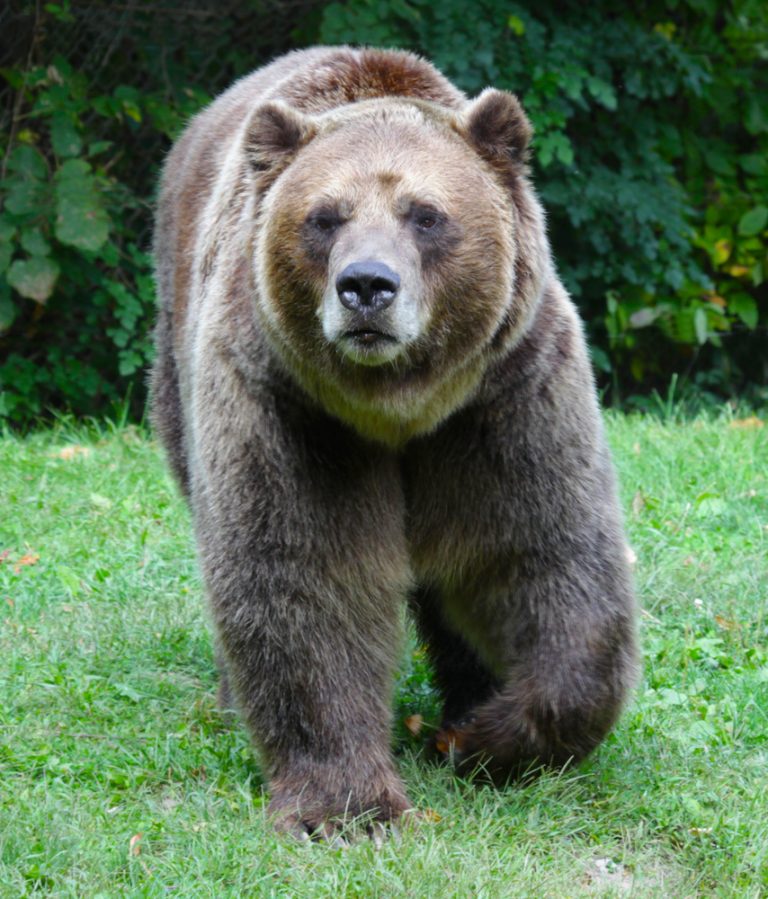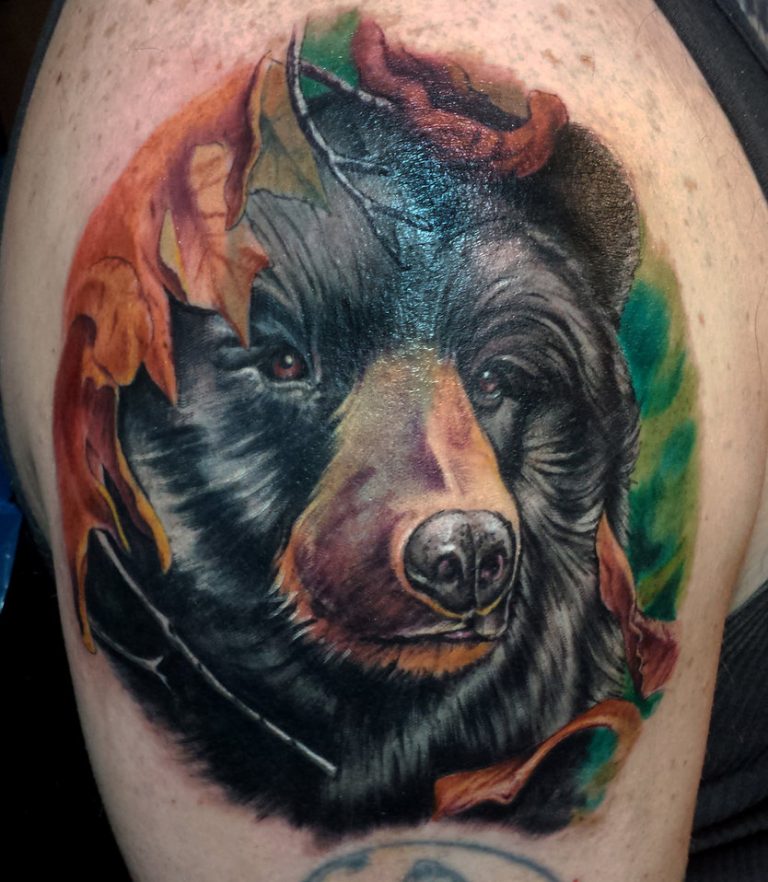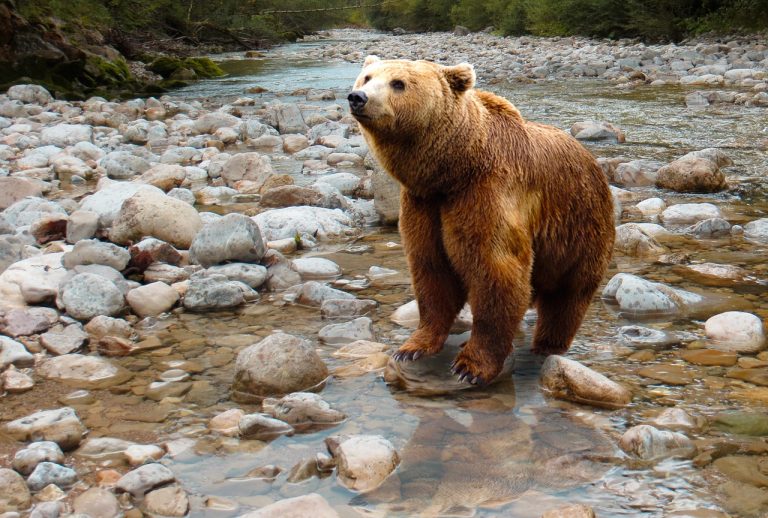The Giant Prehistoric Bears That Dwarf Modern Bear Species
Here’s some evidence, and a video, that shows just how puny the largest bears today look compared to the now extinct giant prehistoric bears.
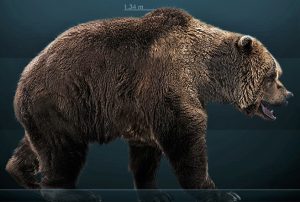
If you think Kodiak bears and Polar bears are scary at maximum heights in the range of 3 meters (9.8 feet), wait till you read about some of the giant prehistoric bears we’ve got lined up for you. Some easily weighed up to 3,500 pounds and stood at 3.7 meters (12 feet tall).
Also, if fossil evidence is anything to go by, these bears were among the most fearsome land predators and in the company of dinosaurs, and mammoths (though the mammoth was herbivorous).
They had to be that big to survive the conditions then until their size became a disadvantage forcing them to evolve into smaller versions.
Giant Prehistoric Bears
1. The Largest Of Them All: Arctotherium Angustidens
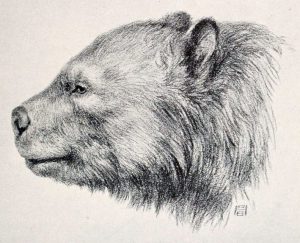
Without mincing words, this was the largest bear ever known. It lived primarily in South America during the Pleistocene epoch, some 2.5 million to 11,000 years ago. Its remains were found while excavations for a hospital construction in La Plata City, Argentina were going on.
Researchers working with information gathered by studying its remains believe it must have weighed anything from 2,000 pounds to 3,500 pounds, or more. That’s nearly double the weight of the largest modern bears like the Kodiak and Polar bears. Also, that’s much more than the largest polar bear ever measured that weighed 2,200 pounds.
It also stood at 3.3 meters (11 feet) tall.
Though, when measured from snout to hind leg, it’s just slightly longer than the largest bears today, it outweighed them in sheer bulk. It had a heavy, stout, and thickly muscled body that gave it the bulk it needed to contend with other equally ferocious predators like the saber-tooth tiger. Probably, it even snatched carcass from other predators that it could overpower.
The modern spectacled bear is its descendant and closest relative , and it’s likely Anustidens must have evolved to become smaller and faster with the gradual reduction in abundance of prey to feast on.
2. The Giant Short-Faced Bear: Arctodus Simus
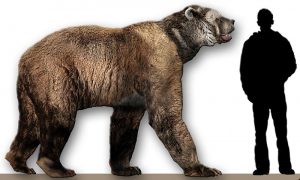
This is one prehistoric bear species that was large enough to possibly rival Arctotherium Angustidens. It lived in the mountains and woodlands of Northern America and originated in the USA before spreading into Canada.
Arctodus simus may have weighed well over 2,000 pounds and grew as tall as 12 feet. This bear could run at speeds of 30 to 40 mph and had an almost exclusive meat-based diet.
No doubt, a formidable predator to say the least.
There aren’t as many fossils of Arctodus simus as those of the cave bear so it’s a lesser known species but its fossils have been discovered from Alaska to the Yukon Territory and even all the way down to Texas, and Mexico.
From what scientist are able to piece together, they are of the opinion that its humongous size eventually worked against it. In that case, it likely just ran after prey for long periods of time until the prey was tired or it would steal carcass from other predators using its size to overwhelm them.
Below is a National Geographic Video that gives you an idea of the kind of size and muscle we are talking about here.
3. The Cave Bear: Ursus Spelaeus
This bear went extinct about 24,000 years ago but before then, it lived across Europe and Asia during the Pleistocene Epoch (2.5 million to 11,700 years ago). The cave bear is among the largest bears ever to walk the face of Europe.
You may wonder how it got the name ‘cave bear.’ Well, its fossils and bones are almost always found in – caves. Though other bears would enter caves to hibernate, etc. this particular bear spent most of its time, all year round in fact, in the limestone caves of Western Europe.
Initially, scientists thought its bones belonged to apes, canids, polar bears, or even dragons and unicorns. This bear is closely related to the brown bear but with a broader skull, longer thigh, and bigger shins.
Cave bear bones were so abundant that the earth from the caves carrying these bones were used as a source of phosphate during World War 1. They were called “dragon caves.”
Cave bear bones are abundant today in countries like Germany, Romania, and Poland. In some parts of Russia, researchers found skeletons of the cave bear and one its antagonists: the cave lion, mixed together. This made scientists to conclude that these two prehistoric predators often fought for the same prey/cave and the winner would claim ownership of the cave.
4. The Tyrant (or King) Polar Bear: Ursus Maritimus Tyrannus
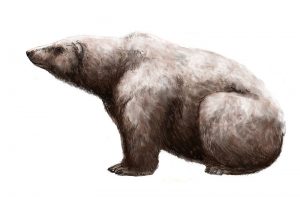
In our modern world today, the male of the polar bear is considered as the largest bear alive. Now, take that size and increase it considerably then you can begin to visualize how large this bear was.
Unfortunately, there isn’t much fossil evidence to go by. In fact, a single bone from the forearm (ulnae) of a subadult bear found in the Thames, London, is all we have to go by. However, this bone measured 48.5cm (19 inches) whereas those of other polar bears of the same age would be at the most 43 cm (17 inches) long.
There is no full skeleton of the tyrant polar bear to go by by but it’s essentially a brown bear subspecies and could attack prey as large as buffaloes.
Or, like other prehistoric giant bears of comparable size, it would just wait for other predators to kill prey them steal the carcass from them.
For now, experts believe this bear could be the link between grizzly bears and modern day polar bears.
5. Bear With The Highest Bite Force (Agriotherium Africanum)
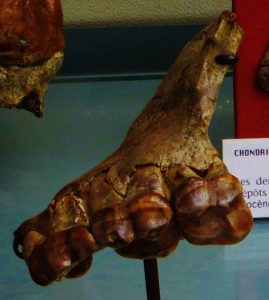
This bear certainly doesn’t come tops for size, but don’t write if off just yet! There is no other bear that can rival it for bite force.
It was about the same size and gait as today’s grizzlies and looked just like them except for the pattern on its face much like that of a raccoon.
The africanum roamed the wilds of Africa during the Miocene and Pliocene epochs. Its skull is that of a dedicated carnivore that goes after large prey. One look at its teeth and you can tell that it could bite through practically anything: bone, muscle, tough plants, etc.
In a study published in the Journal of Zoology, researchers were able to predict that its bite force was in the range of 4566 Newtons of force or approximately 1000 pounds of pressure. Most likely, it needed so much force in order to hold down large prey that struggled fiercely to escape it. Just like what we see in the T-Rex dinosaur, for example.
Also, scientists believe this bear would often feed on very tough plants too, like today’s giant panda further explaining its overwhelming bite force.
Of course since these giant prehistoric bears are no longer living, science can only try to piece together the facts about them as much as possible. But, by studying the fossils especially the teeth and specific parts of the skeleton, there is no doubt that these bears easily dwarfed the modern bears today.

